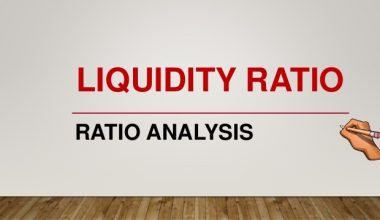Welcome to the exciting world of finance and asset management, where numbers come to life and strategic decision-making can make or break businesses. Today, we delve into a fundamental concept that underpins the financial health and longevity of companies: depreciation and asset management.
Imagine a bustling factory, a sleek office building, or a fleet of vehicles powering a logistics empire. These assets are the lifeblood of organizations, enabling them to produce goods, deliver services, and drive profits. But just like anything in life, these assets don’t last forever. Over time, they wear down, become less efficient, and lose value.
Understanding depreciation, the gradual decrease in the value of assets, is crucial for businesses of all sizes. It not only affects their financial statements but also influences strategic decisions regarding investments, maintenance, and replacements. In this journey, we will explore the ins and outs of depreciation and delve into the art of asset management.
What Is Depreciation?
Depreciation is an accounting concept that recognizes the decrease in value of an asset over its useful life. While certain assets, like land, may not depreciate, others, such as vehicles, machinery, and technology, are subject to depreciation.
This decrease in value is accounted for in financial statements and helps businesses allocate costs over time. By understanding depreciation, businesses can accurately assess the value of their assets, determine their remaining useful life, and make informed decisions regarding repairs, replacements, or upgrades.
Methods of Depreciation
There are several methods to calculate depreciation, each with advantages and applicability. The most common methods include:
- Straight-Line Depreciation: This method evenly distributes the asset’s cost over its useful life. It is simple to calculate and provides a steady depreciation expense each year.
- Declining Balance Depreciation: Also known as accelerated depreciation, this method assigns higher depreciation expenses in an asset’s early years and gradually reduces them over time. It is often used for assets that are more productive in the early years.
- Units of Production Depreciation: This method bases depreciation on the asset’s usage or production levels. The method is suitable for assets that wear out based on their usages, such as manufacturing equipment or vehicles.
Importance of Asset Management
Asset management involves systematically tracking, valuing, and optimizing assets throughout their lifecycle. It ensures that businesses accurately understand their asset portfolio, enabling them to make informed decisions regarding maintenance, replacement, or disposal. Effective asset management offers several benefits:
Cost Optimization
Effective asset management allows businesses to optimize costs associated with their assets. By monitoring and analyzing asset performance and maintenance requirements, businesses can identify opportunities to reduce expenses.
Timely maintenance and strategic upgrades can extend the useful life of assets, resulting in cost savings. Moreover, asset management helps prevent unnecessary purchases or replacements by ensuring that assets are fully utilized before considering new acquisitions.
Risk Mitigation
Asset management plays a vital role in identifying and mitigating risks associated with assets. By closely monitoring the condition and performance of assets, businesses can proactively plan for maintenance, repairs, or replacements, minimizing the risk of unexpected breakdowns or failures
This reduces downtime, improves operational efficiency, and prevents potential disruptions to the business. Asset management also helps businesses identify and address safety and compliance concerns related to their assets.
Regulatory Compliance
Proper asset management ensures compliance with accounting standards, tax regulations, and other legal requirements. Accurate asset valuation and documentation are essential for financial reporting, audits, and tax filings.
Effective asset management practices ensure that businesses have the necessary records and documentation to meet regulatory obligations and demonstrate compliance with industry-specific guidelines.
Decision Making
Asset management provides businesses with accurate and up-to-date information about their asset portfolio. This information is crucial for making informed decisions regarding asset investments, repairs, replacements, or disposals.
By understanding their assets’ value, condition, and performance, businesses can allocate resources effectively and align their strategies with long-term goals. Asset management helps optimize available resources, prevents overinvestment in underperforming assets, and facilitates strategic decision-making.
Financial Planning
Assets are a significant part of a business’s financial position. Proper asset management enables businesses to accurately assess their asset value, depreciation, and residual value, which are essential for financial planning and forecasting.
By understanding the depreciation patterns and estimating the useful life of assets, businesses can plan for future replacements or upgrades, allocate budgets, and project cash flows more accurately. Asset management supports better financial planning, ensuring businesses have the necessary resources to support their operations and growth.
Performance Monitoring
Asset management allows businesses to monitor the performance of their assets and assess their contribution to overall business objectives. By tracking key performance indicators (KPIs) related to asset utilization, maintenance costs, downtime, and productivity, businesses can identify areas for improvement and implement measures to enhance asset performance.
This, in turn, improves operational efficiency, reduces costs, and boosts profitability.
Streamlining Accounting Processes
By streamlining the accounting processes, such as automating data entry and integrating systems, you can ensure that asset information is accurately and promptly recorded in the accounting system. This includes the initial cost, useful life, depreciation method, and any subsequent changes or disposals. This accuracy and timeliness help maintain a reliable record of assets and their corresponding depreciation.
- Implement cloud-based accounting software: Transitioning to cloud-based accounting software allows for real-time access to financial data from anywhere, automates repetitive tasks, and facilitates collaboration among team members.
- Automate data entry: Utilize optical character recognition (OCR) technology to automate the extraction of data from invoices, receipts, and other financial documents. This reduces manual data entry errors and saves time.
- Use electronic invoicing and payment solutions: Implement electronic invoicing systems that generate and send invoices electronically, eliminating the need for paper-based processes. Integrate online payment options to expedite payment collection.
- Establish standard operating procedures (SOPs): Document and communicate standardized procedures for routine accounting tasks, such as month-end close, accounts payable/receivable processes, and financial reporting. SOPs ensure consistency, reduce errors, and enhance efficiency.
- Implement digital document management: Digitize and store financial documents electronically using document management systems. This reduces paperwork, enables easy retrieval, and simplifies document sharing and collaboration.
- Train and upskill accounting staff: Provide regular training to accounting personnel on the effective use of accounting software, new features, and best practices. Enhancing their skills improves productivity and ensures optimal utilization of software capabilities.
- Regularly review and optimize processes: Continuously evaluate accounting processes to identify bottlenecks, inefficiencies, and areas for improvement. Implement changes, streamline workflows, and eliminate redundant steps to enhance overall efficiency.
Conclusion
Understanding depreciation and implementing effective asset management practices are crucial for businesses of all sizes. By accurately valuing assets, businesses can make informed decisions regarding repairs, replacements, or upgrades, ensuring optimal utilization of resources. Streamlining accounting processes with OCR technology and utilizing the best scanner app for receipts enables businesses to automate data entry, reduce errors, and save time. Embracing these practices empowers businesses to enhance financial stability, mitigate risks, and drive overall operational efficiency.






